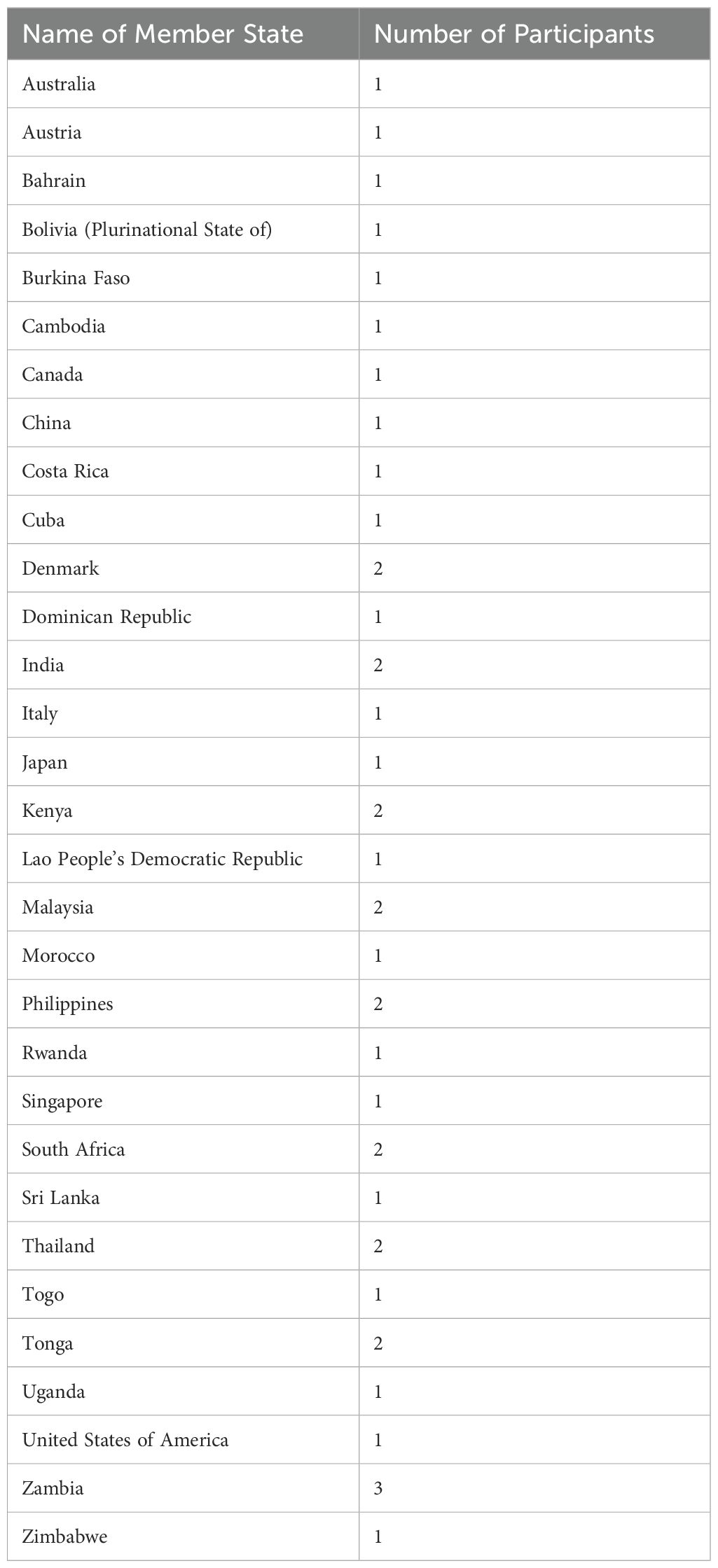Report on the China-Laos Railway’s Impact on Illegal Wildlife Trade and Sustainable Development Goals
Executive Summary
A joint investigation reveals that the China-Laos Railway, an infrastructure project under the Belt and Road Initiative, has significantly exacerbated the illegal wildlife trade (IWT) in Laos. This development directly undermines key United Nations Sustainable Development Goals (SDGs), particularly SDG 15 (Life on Land), SDG 16 (Peace, Justice and Strong Institutions), and SDG 17 (Partnerships for the Goals). The railway has facilitated a tourism boom that is systematically exploited by transnational criminal networks to sell illegal wildlife products, transforming Laos into a major hub for this illicit activity.
Infrastructure Development vs. Sustainable Economic Growth (SDG 8 & SDG 11)
The cross-border train service, launched in April 2023, was intended to foster economic growth and connectivity, aligning with the principles of SDG 8 (Decent Work and Economic Growth) and SDG 11 (Sustainable Cities and Communities). However, its implementation has had severe negative externalities.
- Tourism Surge: Chinese tourist arrivals in Laos increased from approximately 45,000 in 2022 to over 1 million in 2024, with projections reaching 1.3 million in 2025.
- Illicit Economy Growth: This tourism boom has been co-opted to fuel an illicit economy centered on IWT. Revenue models suggest this trade could generate over US$400 million annually, rivaling official tourism earnings but directly contradicting the goal of sustainable economic development.
- Infrastructure as an Enabler: The railway has increased accessibility to remote areas, which has been leveraged by criminal networks to expand their operations under the guise of legitimate tourism.
Direct Threats to Biodiversity and SDG 15 (Life on Land)
The expansion of IWT in Laos represents a severe setback for SDG 15, which calls for urgent action to end poaching and trafficking of protected species of flora and fauna.
- Species Trafficked: Shops openly sell products from critically endangered species, including rhino horn, elephant ivory, bear products, tiger parts, and pangolin scales.
- Scale of Operations: The investigation identified at least 18 large-scale venues operating as fronts for IWT. These are disguised as cultural centers, jewelry stores, and coffee shops.
- Organized Trafficking: The trade is highly organized, with tour operators using coded language and pre-registering Chinese tourists for “cultural shopping” experiences that are, in fact, opportunities to purchase illegal wildlife products.
Governance Deficiencies and a Crisis for SDG 16 (Peace, Justice and Strong Institutions)
The situation highlights a profound failure of governance and law enforcement, undermining the core tenets of SDG 16, which aims to promote just, peaceful, and inclusive societies and build effective, accountable institutions.
- Lack of Enforcement: Despite Laos being a signatory to the Convention on International Trade in Endangered Species of Wild Fauna and Flora (CITES) since 2004 and receiving over US$81 million in counter-IWT funding, enforcement is described as minimal.
- Impunity and Corruption: Prohibited products are sold openly in major tourist areas. Many venues display government authority logos and portraits of officials, creating a perception of state endorsement and impunity.
- Ineffective Aid: The substantial international funding has failed to produce tangible results, raising serious questions about accountability and the effectiveness of current counter-IWT strategies.
Recommendations for International Action and Partnerships (SDG 17)
Addressing this transnational issue requires robust international cooperation, as emphasized by SDG 17 (Partnerships for the Goals). Urgent, coordinated action is necessary from all stakeholders.
- Action within Laos: The Laotian government must uphold its national laws and international commitments under CITES by launching a crackdown on the identified IWT venues and associated networks. This is fundamental to strengthening its institutions (SDG 16).
- Responsibility of China: The Chinese government has clear legal grounds to investigate and prosecute its citizens and tour companies involved in IWT overseas. Such actions are critical for disrupting the demand and supply chains that originate from its tourism sector.
- Reassessment by Donor Countries: International donors must reassess the deployment of conservation funding to ensure it supports effective, verifiable enforcement actions and does not subsidize failed governance. Accountability for the US$81 million already invested is required.
Analysis of Sustainable Development Goals in the Article
1. Which SDGs are addressed or connected to the issues highlighted in the article?
-
SDG 15: Life on Land
This goal is central to the article, which focuses on the illegal wildlife trade (IWT) and its devastating impact on biodiversity. The text explicitly mentions the trafficking of products from endangered species like rhinos, elephants, tigers, and pangolins, directly threatening terrestrial ecosystems and protected species.
-
SDG 16: Peace, Justice and Strong Institutions
The article highlights a profound failure of governance and justice. It points to “minimal enforcement” of anti-trafficking laws, potential corruption suggested by the use of “government authority logos” in illicit shops, and the operation of transnational organized crime networks. These issues are core to SDG 16, which aims to combat crime, reduce corruption, and build effective, accountable institutions.
-
SDG 8: Decent Work and Economic Growth
This goal is relevant as the article discusses the economic impact of a tourism boom catalyzed by the China-Laos Railway. However, it presents a case of unsustainable economic activity where tourism growth is exploited to fuel an illicit economy. The article contrasts the potential US$400 million in illicit revenue with official tourism earnings, showing how economic development can be decoupled from sustainability and decent work, directly challenging the principles of Target 8.9 on sustainable tourism.
2. What specific targets under those SDGs can be identified based on the article’s content?
-
Target 15.7: Take urgent action to end poaching and trafficking of protected species of flora and fauna and address both demand and supply of illegal wildlife products.
The article is a direct case study of the failure to meet this target. It details the supply side (at least 18 venues in Laos selling illegal wildlife products) and the demand side (Chinese tourists purchasing these items). The mention of “rhino horn, elephant ivory, bear products, tiger parts and pangolin products” explicitly refers to the trafficking of protected species.
-
Target 15.c: Enhance global support for efforts to combat poaching and trafficking of protected species…
The article directly addresses this target by noting that despite Laos receiving “over US$81 million in donor funding for counter-IWT efforts,” enforcement remains minimal. This questions the effectiveness of global support and calls for donor countries to “reassess how conservation funding is deployed.”
-
Target 16.4: By 2030, significantly reduce illicit financial and arms flows… and combat all forms of organized crime.
The illegal wildlife trade described is a form of transnational organized crime. The article quantifies the potential illicit financial flow, stating the trade “could be worth over US$400 million,” which is a direct concern of this target.
-
Target 16.5: Substantially reduce corruption and bribery in all their forms.
The article strongly implies corruption and a lack of institutional integrity. The fact that illegal products are sold “almost openly” despite laws and funding, and that venues feature “government authority logos” and “portraits of Laotian and Chinese officials,” points to a breakdown in governance and potential complicity, which this target aims to eliminate.
-
Target 8.9: By 2030, devise and implement policies to promote sustainable tourism that creates jobs and promotes local culture and products.
The article describes the antithesis of this target. The tourism boom is being exploited for an illicit trade that harms biodiversity. The “cultural shopping” experiences are a disguise for illegal activities, undermining the promotion of genuine local culture and sustainable economic development.
3. Are there any indicators mentioned or implied in the article that can be used to measure progress towards the identified targets?
-
Indicator for Target 15.7 (End trafficking):
The article provides qualitative and quantitative data that can serve as indicators. The existence of “at least 18 large-scale venues” openly selling illegal wildlife products is a direct indicator of the scale of illicit trade. The specific products mentioned (ivory, rhino horn, etc.) are used for Indicator 15.7.1 (Proportion of traded wildlife that was poached or illicitly trafficked).
-
Indicator for Target 16.4 (Reduce illicit financial flows):
The article provides a direct monetary figure that aligns with Indicator 16.4.1 (Total value of inward and outward illicit financial flows). The estimate that “the illegal wildlife trade could be worth over US$400 million” serves as a powerful indicator of the value of this illicit flow.
-
Indicator for Target 16.5 (Reduce corruption):
While not providing a direct statistic for Indicator 16.5.2 (Proportion of businesses that had at least one contact with a public official and that paid a bribe), the article offers strong qualitative evidence. The “minimal enforcement” despite US$81 million in funding and the use of “government authority logos” in illicit shops are powerful proxy indicators of systemic corruption or a severe lack of institutional accountability.
-
Indicator for Target 8.9 (Promote sustainable tourism):
The article provides data relevant to Indicator 8.9.1 (Tourism direct GDP as a proportion of total GDP). It gives the number of Chinese tourists surging to “over 1 million in 2024” and contrasts the potential illicit revenue (US$400 million) with “the country’s official tourism earnings.” This comparison serves as an indicator of the *unsustainability* of the current tourism model, where a significant portion of its economic footprint is illicit and destructive.
4. Table of SDGs, Targets, and Indicators
| SDGs | Targets | Indicators Identified in the Article |
|---|---|---|
| SDG 15: Life on Land |
15.7: End poaching and trafficking of protected species.
15.c: Enhance global support for efforts to combat poaching and trafficking. |
– Existence of at least 18 large-scale venues selling illegal wildlife products (rhino horn, elephant ivory, tiger parts, etc.).
– Ineffectiveness of over US$81 million in donor funding for counter-IWT efforts, indicating a failure in the deployment of global support. |
| SDG 16: Peace, Justice and Strong Institutions |
16.4: Significantly reduce illicit financial flows and combat all forms of organized crime.
16.5: Substantially reduce corruption and bribery. |
– Estimated value of the illicit financial flow from IWT at over US$400 million.
– Qualitative evidence of corruption: “minimal enforcement” and the use of “government authority logos” in illicit venues to create an “appearance of state endorsement.” |
| SDG 8: Decent Work and Economic Growth | 8.9: Promote sustainable tourism. |
– Data on tourism growth (from 45,000 to over 1 million Chinese tourists) is linked to an illicit economy, indicating an unsustainable model.
– The estimated US$400 million in illicit revenue rivals official tourism earnings, showing a significant portion of the economic activity is destructive, not sustainable. |
Source: globalinitiative.net







